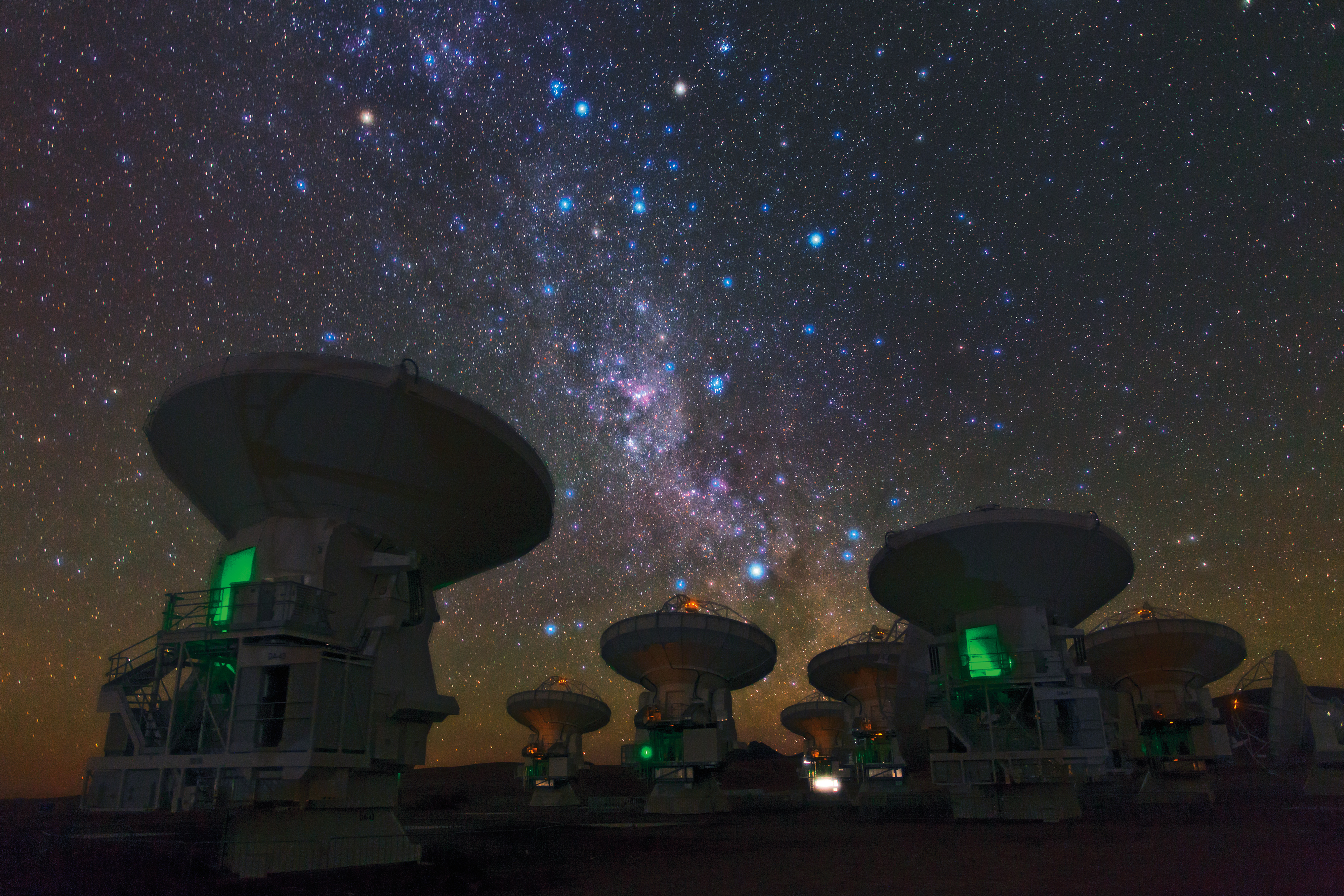Daily Image
03-10-2012ALMA, Star gazing in the Andes
| Submitter: | Johan Pragt and Ramon Navarro |
| Description: | Labyrinth TV | Wednesday, October 3, 20:50, Ned 2 On a bare plateau in the Chilean Andes forty telescopes perform a cosmic ballet. Almost without spectators, because the telescopes of the Atacama Large Millimeter / submillimeter Array (ALMA) are located at five kilometers altitude, in a sparse, human unfriendly atmosphere. The research group of Joost Adema of SRON Groningen worked for many years on one of the most important parts of this telescope. He has never seen the Chilean telescopes firsthand. Labyrinth TV travels with him during his first visit to the inhospitable plateau. The ALMA telescopes observe submillimetre radiation from space. That radiation is roughly located between the infrared light from the remote and the microwaves from the microwave. Moisture in the atmosphere absorbs this type of radiation, and therefore the telescopes are high and dry, at the 5000 meters high Chajnantorplateau, in the driest desert on earth: the Chilean Atacama Desert. Together, the telescopes create the sharpest vision ever on the nurseries of stars and planets. Where solar systems like ours are born. The lack of oxygen, the biting wind and freezing cold make a long stay on the plateau impossibile. The telescopes are therefore remotely controlled from the control center, 2000 meters lower. "You should really see it as a satellite," says ALMA director Thijs de Graauw. "You only go there if something is broken." The Netherlands play an important role in this astronomical sample project. Not only the director is a Dutchman, one of the most important tools - radiation receiver number 9, built by SRON in Groningen - is of Dutch origin. And Dutch top astronomers, such as Spinoza winners Heino Falcke and Ewine van Dishoeck, are doing research with Chilean telescopes. Heino Falcke observes the supermassive black hole at the center of our galaxy, and Van Dishoeck examines the dark nebulae where stars and planets arise. Last month she discovered sugar molecules in the gas around a young sun-like star, using the ALMA telescope . The molecule is one of the ingredients for the building blocks of life. ALMA is a joint project between the U.S., Japan and Europe. The European contribution is coordinated by ESO, the European Southern Observatory. On October 5, ESO celebrates its 50th anniversary. The Dutch contribution, the Band 9 receivers (made by NOVA/Kapteyn), will also be mentioned. ASTRON supplied the optical parts of the Band 9 receiver. More info, including a short introduction filmclip, can be found on: http://www.wetenschap24.nl/programmas/labyrint/labyrint-tv/2012/oktober/ALMA.html After the show you can start voting for the 'Labyrint Publieksprijs' to be awarded October 24th. One of the finalists is iSPEX, a team that includes NOVA-ASTRON. Next week the ASTRON JIVE Daily Image will provide more information on this topic. http://www.wetenschap24.nl/programmas/labyrint/publieksprijs.html |
| Copyright: | ESO/B. Tafreshi (twanight.org) |
| Tweet |  |
